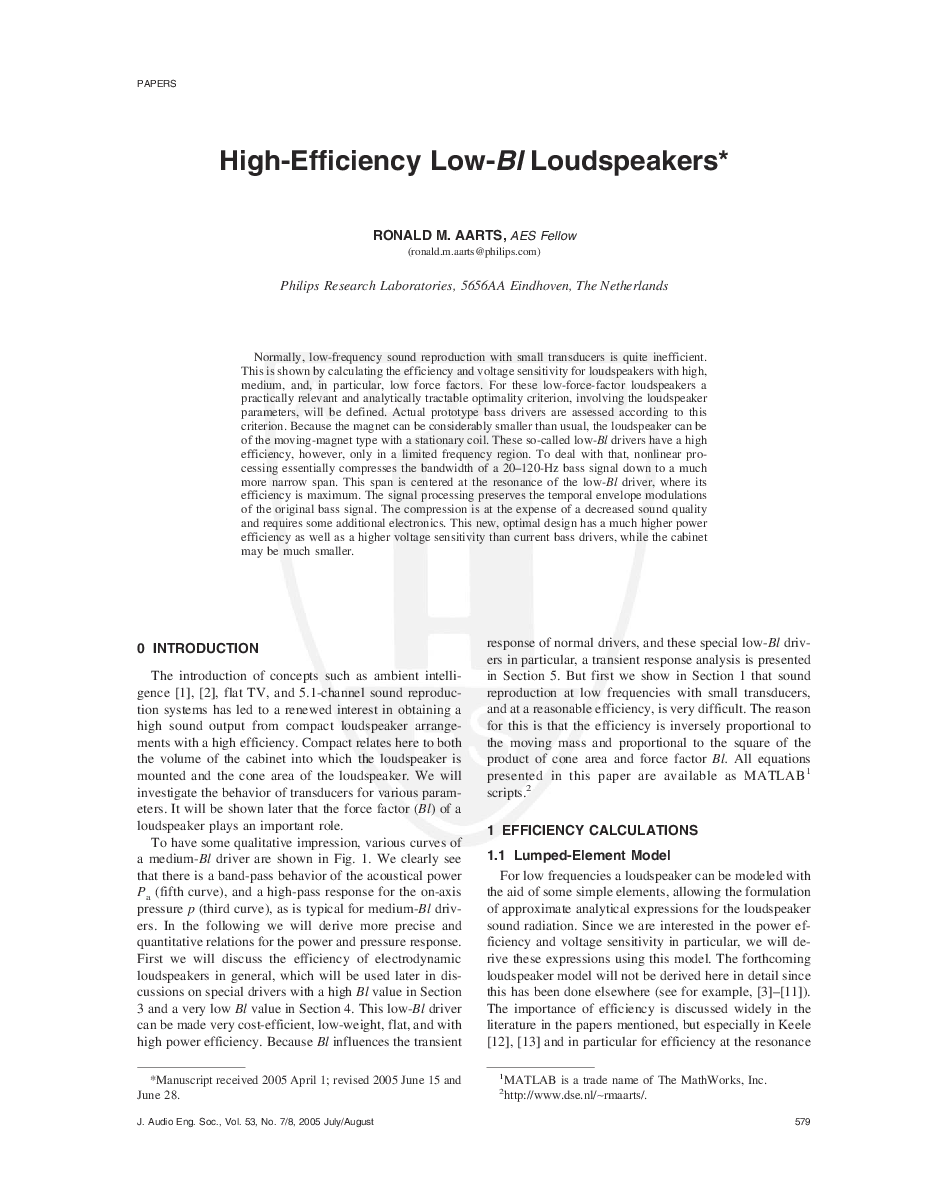Home / Publications / E-library page
You are currently logged in as an
Institutional Subscriber.
If you would like to logout,
please click on the button below.
Home / Publications / E-library page
Only AES members and Institutional Journal Subscribers can download
Normally, low-frequency sound reproduction with small transducers is quite inefficient. This is shown by calculating the efficiency and voltage sensitivity for loudspeakers with high, medium, and, in particular, low force factors. For these low-force-factor loudspeakers a practically relevant and analytically tractable optimality criterion, involving the loudspeaker parameters, will be defined. Actual prototype bass drivers are assessed according to this criterion. Because the magnet can be considerably smaller than usual, the loudspeaker can be of the moving-magnet type with a stationary coil. These so-called low-Bl drivers have a high efficiency, however, only in a limited frequency region. To deal with that, nonlinear processing essentially compresses the bandwidth of a 20–120-Hz bass signal down to a much more narrow span. This span is centered at the resonance of the low-Bl driver, where its efficiency is maximum. The signal processing preserves the temporal envelope modulations of the original bass signal. The compression is at the expense of a decreased sound quality and requires some additional electronics. This new, optimal design has a much higher power efficiency as well as a higher voltage sensitivity than current bass drivers, while the cabinet may be much smaller.
Author (s): Aarts, Ronald M.
Affiliation:
Philips Research Laboratories, Eindhoven, The Netherlands
(See document for exact affiliation information.)
Publication Date:
2005-07-06
Import into BibTeX
Permalink: https://aes2.org/publications/elibrary-page/?id=13427
(342KB)
Click to purchase paper as a non-member or login as an AES member. If your company or school subscribes to the E-Library then switch to the institutional version. If you are not an AES member Join the AES. If you need to check your member status, login to the Member Portal.

Aarts, Ronald M.; 2005; High-Efficiency Low-Bl Loudspeakers [PDF]; Philips Research Laboratories, Eindhoven, The Netherlands; Paper ; Available from: https://aes2.org/publications/elibrary-page/?id=13427
Aarts, Ronald M.; High-Efficiency Low-Bl Loudspeakers [PDF]; Philips Research Laboratories, Eindhoven, The Netherlands; Paper ; 2005 Available: https://aes2.org/publications/elibrary-page/?id=13427